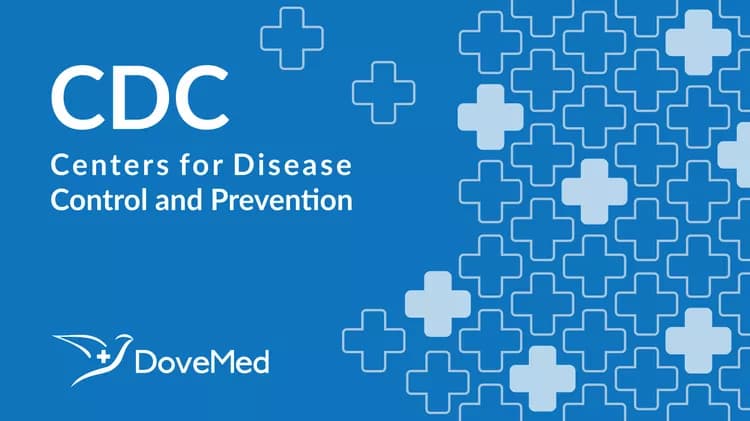
HHS Issues Report Charting Steady Gains in Americans' Health, Though Diabetes Remains Growing Concern
HHS Issues Report Charting Steady Gains in Americans' Health, Though Diabetes Remains Growing Concern
Life expectancy in the United States reached an all time high in 2001, and the gap between blacks and whites has narrowed, according to the U.S. Department of Health and Human Services’ (HHS) annual report on the nation’s health. The report also finds evidence that the diabetes epidemic is getting worse; between 1997 and 2002, the percent of Americans diagnosed with diabetes increased by 27 percent.
“While this report shows we’re continuing to make progress in improving Americans’ health, we know that we can do much more to reduce the impact of diabetes and other chronic, preventable diseases,” HHS Secretary Tommy G. Thompson said. “There are simple steps we can all take, such as eating wisely and staying active, that can reduce the toll that diabetes, obesity and heart disease take on our lives.”
Health United States, 2003 is a comprehensive report with the latest statistics from federal health agencies, the U.S. Census Bureau, population surveys and other data. The report was prepared by the National Center for Health Statistics (NCHS) in HHS’ Centers for Disease Control and Prevention and is the 27th annual report to the President and Congress, as required by The Public Health Service Act.
In a special section on diabetes, the report notes that 6.5 percent of American adults were diagnosed with diabetes in 2002 compared to 5.1 percent in 1997. Another recent study shows that about 12 million adults have been diagnosed with diabetes and an additional 5 million adults have the condition but don’t know it.
An estimated 12 million adults have impaired fasting glucose tolerance and many of these will go on to develop diabetes unless they successfully adopt changes in weight management and physical activity -- steps that can prevent and reduce obesity, which is a major risk factor for type 2 diabetes. In addition, visits to physician offices and hospitals for diabetes have increased dramatically since the mid-1990’s.
Diabetes was the fifth leading cause of death among women and sixth among men in 2001. People with diabetes run the risk of severe complications, including heart disease, chronic kidney disease, blindness and amputations.
“Prevention is the only sure way to stem this epidemic,” said Dr. Julie Gerberding, CDC director. “By eating a healthy diet and engaging in regular physical activity, individuals can greatly reduce their risk of developing type 2 diabetes.”
Other milestones noted in this year’s Health United States Report include:
Life and Death
Average life expectancy reached a record high of 77.2 years in 2001, rising nearly two years since 1990. The life expectancy for women was 79.8 years, an increase of one year from 1990. Men’s life expectancy was 74.4 years in 2001, an increase of over two years since 1990.
The gap in life expectancy between blacks and whites has narrowed significantly since 1990, when whites on average lived seven years longer. The gap in 2001 was 5.5 years, down from 5.7 in 2000.
Infant mortality reached a record low in 2001 of 6.8 infant deaths per 1,000 live births, down from 6.9 in 2000.
The birth rate for teenagers was the lowest in more than six decades: 45 births per 1,000 women aged 15 to 19.
Preventive Care
Seventy-eight percent of all toddlers (19 to 35 months) completed a series of childhood vaccinations against infectious diseases in 2002, but vaccination rates varied from 72 percent for children in poor families to 79 percent for those in families at or above the poverty level.
Eighty-three percent of mothers received prenatal care in the first trimester in 2001, up from 76 percent in 1990.
Two-thirds of the elderly got flu shots in 2002, matching the previous high in 1999.
Eighty-one percent of women 18 and older in 2000 had a recent Pap smear (within three years). In 1987 the rate was 74 percent.
Behavior and Risk Factors
Obesity has more than doubled from 15 percent in 1976-80 to 31 percent in 1999-2000. Sixty-five percent of adults ages 20 to 74 were overweight or obese in 1999-2000.
Twenty-five percent of men and 20 percent of women were smokers in 2002, down only slightly from 1990.
Twenty-nine percent of high school students reported smoking cigarettes in the past month in 2001, down from 36 percent in 1997. That reverses an upward trend from the early 1990s.
Thirty-eight percent of female high school students and 24 percent of male students did not engage in recommended amounts of moderate or vigorous physical exercise in 2001.
Access to Health Care
Thirteen percent of children younger than 18 did not visit a doctor or clinic in the past 12 months; 6 percent had no usual source of medical care in 2000-01. Hispanic and black children were more likely to be without a usual source of care.
“While the health of the nation has improved overall, some groups have been left behind. It’s vitally important that we keep collecting reliable and accurate information so we can chart future trends, target resources and set priorities that lead to better health for all Americans,” said Edward J.
Sondik, Ph.D., NCHS director.
In addition to the printed volume, Health United States is available online at http://www.cdc.gov/nchs/ as an electronic edition, which is periodically updated with new data.
# # #
CDC protects people's health and safety by preventing and controlling diseases and injuries; enhances health decisions by providing credible information on critical health issues; and promotes healthy living through strong partnerships with local, national, and international organizations.
Related Articles
Test Your Knowledge
Asked by users
Related Centers
Related Specialties
Related Physicians
Related Procedures
Related Resources
Join DoveHubs
and connect with fellow professionals

0 Comments
Please log in to post a comment.